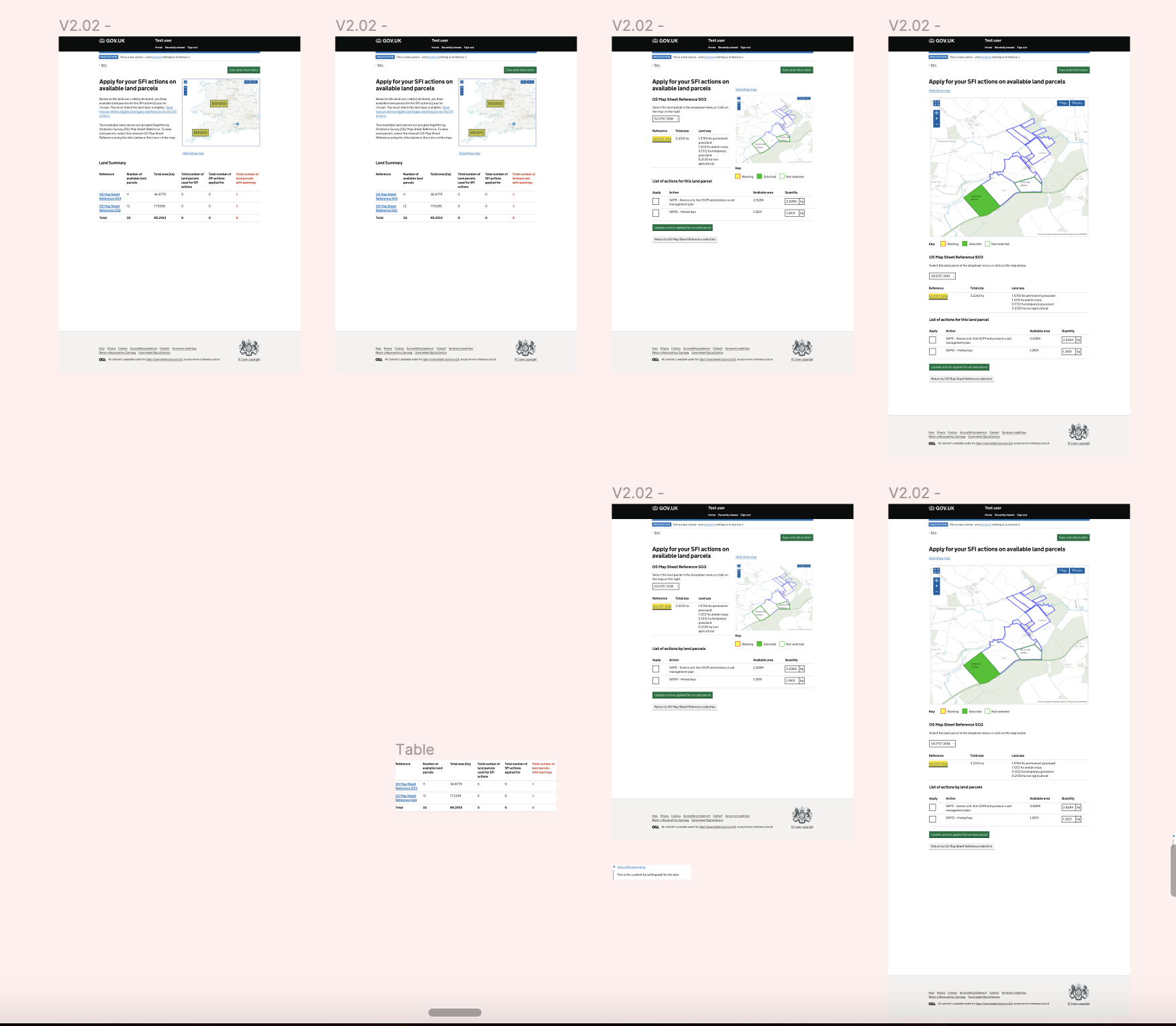Designing farming services post - Brexit.
Department for environment and rural affairs. UK.
February 19- April 20./ Aug. 21- Aug.23.
I have helped this organisation for a number of years in defining services as per policy changes, optimising platforms, designing operating models and evaluating technology systems.
The services I have worked on have impacted 250000 farmers, plus third party organisations that work alongside Defra.
Tube Map. Front and back office of 4 live services including user needs and pain points.
Projects and challenges
Design of new service to pay farmers for environmental outcomes, future operating model, capability mapping and payments system migration
I designed a new service that was piloted but had usability issues. The screens below are the re-design of the most problematic steps of the journey, which didn’t test well during usability testing. The screens show the changes that we recommended according to business and user findings.
I also did an organisational capability mapping together with architects and business analysts, to better understand the technological landscape across the organisation.
In this role, I managed complex stakeholders as I needed to demonstrate the value of design to the policy teams, and this landscape changed continuously.
In my last project, I designed a new payments journey adapting to a new technology, which replaced an old one that presented issues to external and internal users.
Figma prototype. Iteration of user journey based on user feedback and feasibility
Approach
Continuous improvement by testing often, stakeholder management across the organisation, and close collaboration with product and technical teams
The commonalty across all the projects was the need for aligning stakeholders towards common goals benefiting internal and external users.
In my role, there was a constant need to compromise and prioritise due to the balance between policy and what the users need, which often differs.
I leveraged on user data as my main tool for advising on design changes and features. Often, I had to work around technical constrains, given contractual agreements with providers and providers’ priorities. I managed to successfully make changes that improved the customer experience by liaising with technical teams and working closely with the product managers.
Rounds of user testing helped us design future iterations of the service
Getting close to the farmers helped us understand what the key points were for us to design around.
These were mapped out against the needs and requirements of the technical and product teams
Entering the farm warehouses.
Mapping of user and technical needs to find opportunities
Applying agile ways of working to better identify opportunities in order to improve the customer experience across a number of services.
Policy service blueprint. Contents are confidential.
Key results and reflection
Overall improvement of the customer experience across user journeys
The main objective behind the projects that I worked on was to align the customer experience across the user journeys, so that it didn’t feel fragmented and disperse.
The main outcome of my design work was to demonstrate that by making feasible high impact changes, consistency could be achieved.
Even though sometimes there was not enough flexibility to make all the improvements that were suggested, providing evidence to back up key decisions and mapping the experience across multiple journeys, was a success of my work throughout the years.


